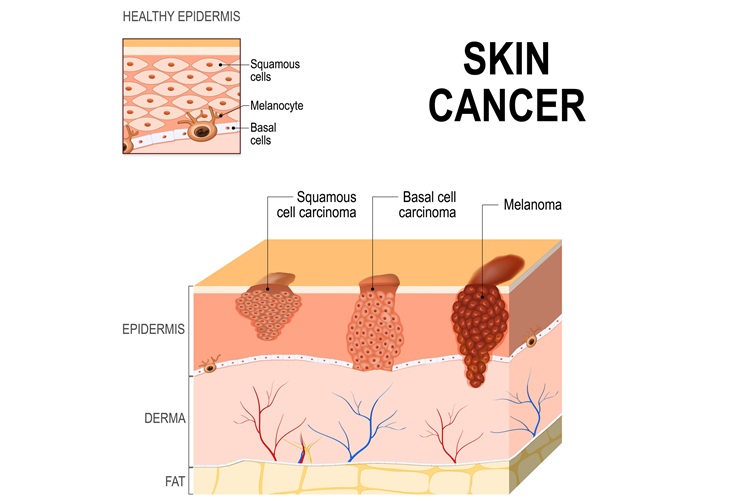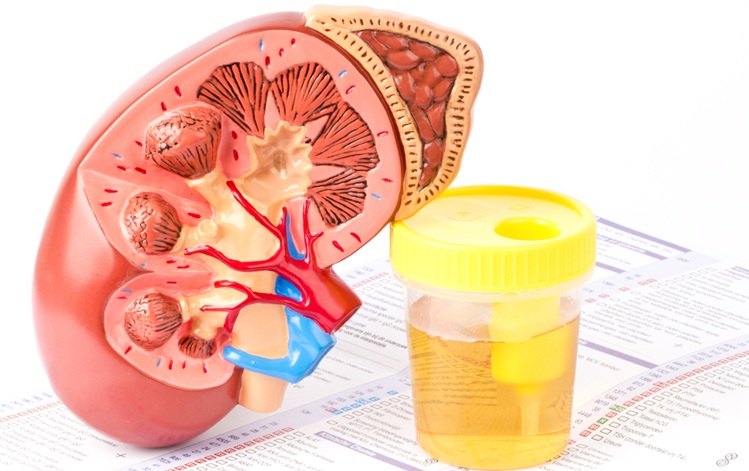COVID-19 Transformation to Help Global qPCR and dPCR Instrumentation Market Reach USD 9.2 Billion by 2026
|
By LabMedica International staff writers Posted on 04 Jun 2021 |

Illustration
The global market for quantitative PCR (qPCR) and digital PCR (dPCR) instrumentation estimated at USD 5.2 billion in 2020 is projected to grow at a CAGR of 9.8% to reach USD 9.2 billion by 2026, driven by opportunities and challenges in a significantly transformed post COVID-19 marketplace.
These are the latest findings of Global Industry Analysts Inc., (San Jose, CA, USA), a market research company.
Real-Time Polymerase Chain Reaction (PCR) also referred to as qPCR analysis, is a modification of the traditional PCR technique. In traditional PCR, the amplified DNA product or amplicon is detected in an end-point analysis by visualization of the DNA product on an agarose gel subsequent to completion of the reaction, which comprises a specified number of amplification cycles. In real-time PCR, however, the accumulation of amplification product is evaluated simultaneously with the progress of the reaction. Product quantification is carried out in real time, after every cycle.
dPCR is an improvement of traditional PCR methods and is utilized to directly quantify as well as clonally amplify nucleic acids such as DNA, RNA, cDNA or methylated DNA. However, digital PCR is at an early stage. The main difference between conventional PCR and dPCR lies in the method used to measure amounts of nucleic acids. Sensitivity of dPCR is high in comparison to qPCR, hence, the technology is particularly used in applications wherein there is a low amount of target sequence. For instance, mutation genes that are found on a very low scale in rare diseases, and HIV DNA that are present in 1,000-10,000 in number within the cell of a patient can be easily detected through the technology.
Amid the COVID-19 crisis, the qPCR segment is projected to grow at a CAGR of 9.3% to USD 8.4 billion, while the dPCR segment is expected to record a CAGR of 13% over the next 7-year period. The dPCR segment currently accounts for a 12.5% share of the global qPCR and dPCR instrumentation market.
Geographically, the US qPCR and dPCR instrumentation market which currently holds a share of 30.8% in the global market was estimated to reach USD 1.9 billion in 2021. The Chinese qPCR and dPCR instrumentation market is projected to grow at a CAGR of 12.2% through the analysis period to reach USD 0.742 billion in 2026. Among the other noteworthy geographies the qPCR and dPCR instrumentation market in Japan and Canada are projected to grow at a CAGR of 8.1% and 8.6%, respectively over the analysis period. Within Europe, Germany is forecasted to grow at a CAGR of approximately 9.1% while Rest of European market is expected to reach USD 0.81 billion by 2026.
While Europe is another large market for qPCR and dPCR instrumentation, the global market growth is expected to be spearheaded by Asia-Pacific. In terms of concentration, a large number of leading companies are located in the US and Europe. However, increasing competition in the markets over the last few years has been driving various players to shift their attention to other promising regions, including Latin America and Asia-Pacific. In Asia-Pacific, the growth of the qPCR and dPCR instrumentation market is being led by the increased use of qPCR in blood donor testing & screening and diagnosis of infectious diseases and tropical diseases such as malaria.
Increasing geriatric population and the resulting incidents of chronic medical conditions such as cancer, coupled with broader application of PCR to study mutations and gene anomalies related to these diseases, are driving the adoption of qPCR and dPCR instrumentation in the Asia-Pacific region. Additionally, the falling cost of nucleic acid detection, quantification, and amplification techniques will also encourage the adoption of qPCR and dPCR instrumentation in research and diagnosis, particularly in the region’s developing, resource poor countries. PCR solution suppliers in Asia-Pacific have been increasingly focusing on establishing or expanding their production and sales network in the region. In recent years, various vendors have shifted their manufacturing units to the region in order to enjoy cost benefits and access the domestic markets, which in turn, is increasing awareness about the technology in the region, thereby contributing to its market growth.
Related Links:
Global Industry Analysts Inc.
These are the latest findings of Global Industry Analysts Inc., (San Jose, CA, USA), a market research company.
Real-Time Polymerase Chain Reaction (PCR) also referred to as qPCR analysis, is a modification of the traditional PCR technique. In traditional PCR, the amplified DNA product or amplicon is detected in an end-point analysis by visualization of the DNA product on an agarose gel subsequent to completion of the reaction, which comprises a specified number of amplification cycles. In real-time PCR, however, the accumulation of amplification product is evaluated simultaneously with the progress of the reaction. Product quantification is carried out in real time, after every cycle.
dPCR is an improvement of traditional PCR methods and is utilized to directly quantify as well as clonally amplify nucleic acids such as DNA, RNA, cDNA or methylated DNA. However, digital PCR is at an early stage. The main difference between conventional PCR and dPCR lies in the method used to measure amounts of nucleic acids. Sensitivity of dPCR is high in comparison to qPCR, hence, the technology is particularly used in applications wherein there is a low amount of target sequence. For instance, mutation genes that are found on a very low scale in rare diseases, and HIV DNA that are present in 1,000-10,000 in number within the cell of a patient can be easily detected through the technology.
Amid the COVID-19 crisis, the qPCR segment is projected to grow at a CAGR of 9.3% to USD 8.4 billion, while the dPCR segment is expected to record a CAGR of 13% over the next 7-year period. The dPCR segment currently accounts for a 12.5% share of the global qPCR and dPCR instrumentation market.
Geographically, the US qPCR and dPCR instrumentation market which currently holds a share of 30.8% in the global market was estimated to reach USD 1.9 billion in 2021. The Chinese qPCR and dPCR instrumentation market is projected to grow at a CAGR of 12.2% through the analysis period to reach USD 0.742 billion in 2026. Among the other noteworthy geographies the qPCR and dPCR instrumentation market in Japan and Canada are projected to grow at a CAGR of 8.1% and 8.6%, respectively over the analysis period. Within Europe, Germany is forecasted to grow at a CAGR of approximately 9.1% while Rest of European market is expected to reach USD 0.81 billion by 2026.
While Europe is another large market for qPCR and dPCR instrumentation, the global market growth is expected to be spearheaded by Asia-Pacific. In terms of concentration, a large number of leading companies are located in the US and Europe. However, increasing competition in the markets over the last few years has been driving various players to shift their attention to other promising regions, including Latin America and Asia-Pacific. In Asia-Pacific, the growth of the qPCR and dPCR instrumentation market is being led by the increased use of qPCR in blood donor testing & screening and diagnosis of infectious diseases and tropical diseases such as malaria.
Increasing geriatric population and the resulting incidents of chronic medical conditions such as cancer, coupled with broader application of PCR to study mutations and gene anomalies related to these diseases, are driving the adoption of qPCR and dPCR instrumentation in the Asia-Pacific region. Additionally, the falling cost of nucleic acid detection, quantification, and amplification techniques will also encourage the adoption of qPCR and dPCR instrumentation in research and diagnosis, particularly in the region’s developing, resource poor countries. PCR solution suppliers in Asia-Pacific have been increasingly focusing on establishing or expanding their production and sales network in the region. In recent years, various vendors have shifted their manufacturing units to the region in order to enjoy cost benefits and access the domestic markets, which in turn, is increasing awareness about the technology in the region, thereby contributing to its market growth.
Related Links:
Global Industry Analysts Inc.
Latest Industry News
- Qiagen Acquires Single-Cell Omics Firm Parse Biosciences
- Puritan Medical Products Showcasing Innovation at AMP2025 in Boston
- Advanced Instruments Merged Under Nova Biomedical Name
- Bio-Rad and Biodesix Partner to Develop Droplet Digital PCR High Complexity Assays
- Hologic to be Acquired by Blackstone and TPG
- Bio-Techne and Oxford Nanopore to Accelerate Development of Genetics Portfolio
- Terumo BCT and Hemex Health Collaborate to Improve Access to Testing for Hemoglobin Disorders
- Revvity and Sanofi Collaborate on Program to Revolutionize Early Detection of Type 1 Diabetes
- GSI Group Acquires Blood Processing Equipment Manufacturer GenesisBPS
- ELITech and Hitachi High-Tech to Develop Automated PCR Testing System for Infectious Diseases
- Lumiquick Acquires Aoxre to Expand Global IVD and Research Capabilities
- Lunit and Agilent Partner to Develop AI-Powered Cancer Diagnostics
- Qiagen and Oxford Gene Technology Partner on Sequencing Panel Interpretation
- VedaBio Partners With Mammoth Biosciences to Expand CRISPR-Based Diagnostic Technologies
- Werfen and VolitionRx Partner to Advance Diagnostic Testing for Antiphospholipid Syndrome
- Siemens Healthineers and Carna Health Partner to Advance Kidney Care Innovation
Channels
Clinical Chemistry
view channel
VOCs Show Promise for Early Multi-Cancer Detection
Early cancer detection is critical to improving survival rates, but most current screening methods focus on individual cancer types and often involve invasive procedures. This makes it difficult to identify... Read more
Portable Raman Spectroscopy Offers Cost-Effective Kidney Disease Diagnosis at POC
Kidney disease is typically diagnosed through blood or urine tests, often when patients present with symptoms such as blood in urine, shortness of breath, or weight loss. While these tests are common,... Read moreMolecular Diagnostics
view channel
Urine Test Detects Early Stage Pancreatic Cancer
Pancreatic cancer remains among the hardest cancers to detect early. In the UK, around 10,000 people are diagnosed each year, but only 5% survive beyond five years. Late diagnosis is a major factor—more... Read more
Genomic Test Could Reduce Lymph Node Biopsy Surgery in Melanoma Patients
Accurately determining whether melanoma has spread to the lymph nodes is crucial for guiding treatment decisions, yet the standard procedure—sentinel lymph node biopsy—remains invasive, costly, and unnecessary... Read moreHematology
view channel
ADLM’s New Coagulation Testing Guidance to Improve Care for Patients on Blood Thinners
Direct oral anticoagulants (DOACs) are one of the most common types of blood thinners. Patients take them to prevent a host of complications that could arise from blood clotting, including stroke, deep... Read more
Viscoelastic Testing Could Improve Treatment of Maternal Hemorrhage
Postpartum hemorrhage, severe bleeding after childbirth, remains one of the leading causes of maternal mortality worldwide, yet many of these deaths are preventable. Standard care can be hindered by delays... Read more
Pioneering Model Measures Radiation Exposure in Blood for Precise Cancer Treatments
Scientists have long focused on protecting organs near tumors during radiotherapy, but blood — a vital, circulating tissue — has largely been excluded from dose calculations. Each blood cell passing through... Read moreImmunology
view channel
Blood-Based Liquid Biopsy Model Analyzes Immunotherapy Effectiveness
Immunotherapy has revolutionized cancer care by harnessing the immune system to fight tumors, yet predicting who will benefit remains a major challenge. Many patients undergo costly and taxing treatment... Read more
Signature Genes Predict T-Cell Expansion in Cancer Immunotherapy
Modern cancer immunotherapies rely on the ability of CD8⁺ T cells to rapidly multiply within tumors, generating the immune force needed to eliminate cancer cells. However, the biological triggers behind... Read moreMicrobiology
view channel
Fast Noninvasive Bedside Test Uses Sugar Fingerprint to Detect Fungal Infections
Candida bloodstream infections are a growing global health threat, causing an estimated 6 million cases and 3.8 million deaths annually. Hospitals are particularly vulnerable, as weakened patients after... Read more
Rapid Sepsis Diagnostic Device to Enable Personalized Critical Care for ICU Patients
Sepsis is a life-threatening condition that occurs when the body’s response to infection spirals out of control, damaging organs and leading to critical illness. Patients often arrive at intensive care... Read morePathology
view channel
New Molecular Analysis Tool to Improve Disease Diagnosis
Accurately distinguishing between similar biomolecules such as proteins is vital for biomedical research and diagnostics, yet existing analytical tools often fail to detect subtle structural or compositional... Read more
Tears Offer Noninvasive Alternative for Diagnosing Neurodegenerative Diseases
Diagnosing and monitoring eye and neurodegenerative diseases often requires invasive procedures to access ocular fluids. Ocular fluids like aqueous humor and vitreous humor contain valuable molecular information... Read moreTechnology
view channel
Cell-Sorting Device Uses Electromagnetic Levitation to Precisely Direct Cell Movement
Sorting different cell types—such as cancerous versus healthy or live versus dead cells—is a critical task in biology and medicine. However, conventional methods often require labeling, chemical exposure,... Read more
Embedded GPU Platform Enables Rapid Blood Profiling for POC Diagnostics
Blood tests remain a cornerstone of medical diagnostics, but traditional imaging and analysis methods can be slow, costly, and reliant on dyes or contrast agents. Now, scientists have developed a real-time,... Read moreIndustry
view channel
Qiagen Acquires Single-Cell Omics Firm Parse Biosciences
QIAGEN (Venlo, Netherlands) has entered into a definitive agreement to fully acquire Parse Biosciences (Seattle, WA, USA), a provider of scalable, instrument-free solutions for single-cell research.... Read more
Puritan Medical Products Showcasing Innovation at AMP2025 in Boston
Puritan Medical Products (Guilford, ME, USA), the world’s most trusted manufacturer of swabs and specimen collection devices, is set to exhibit at AMP2025 in Boston, Massachusetts, from November 11–15.... Read more
Advanced Instruments Merged Under Nova Biomedical Name
Advanced Instruments (Norwood, MA, USA) and Nova Biomedical (Waltham, MA, USA) are now officially doing business under a single, unified brand. This transformation is expected to deliver greater value... Read more























